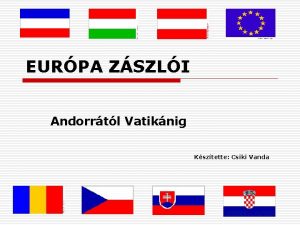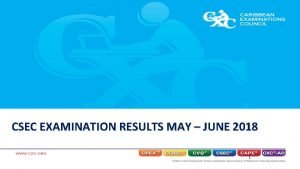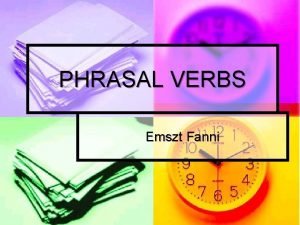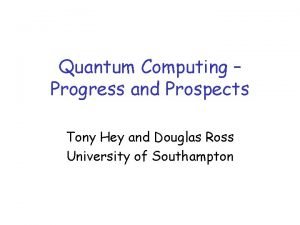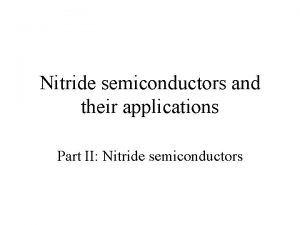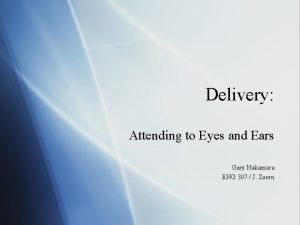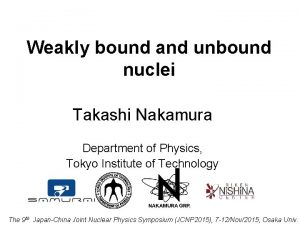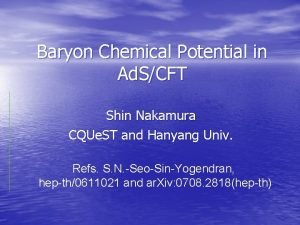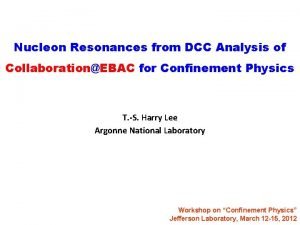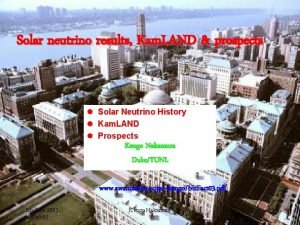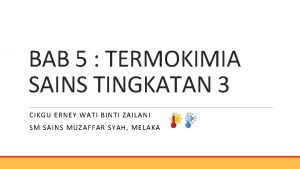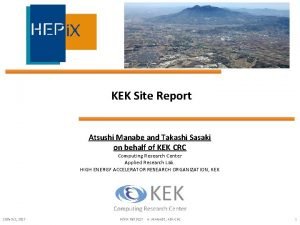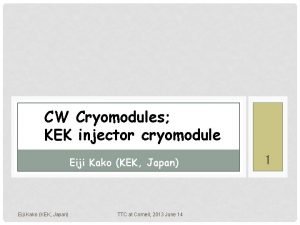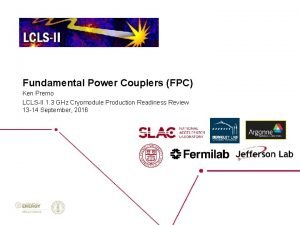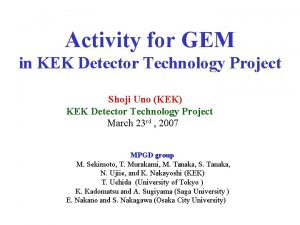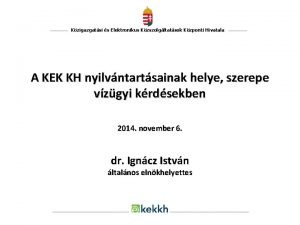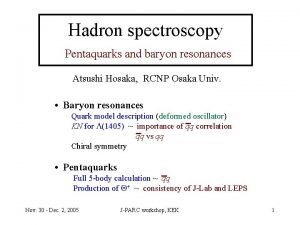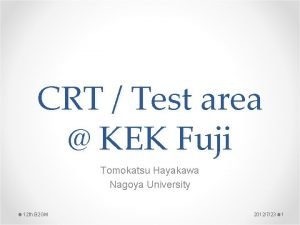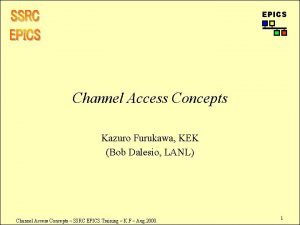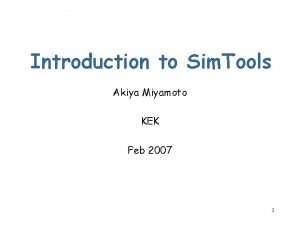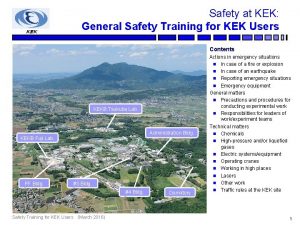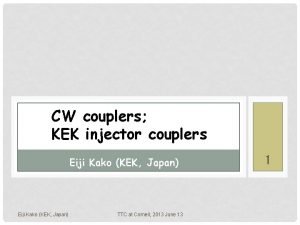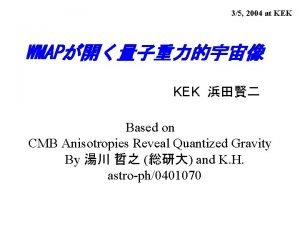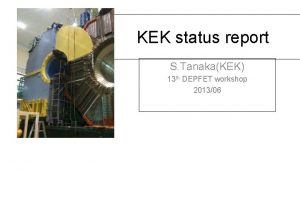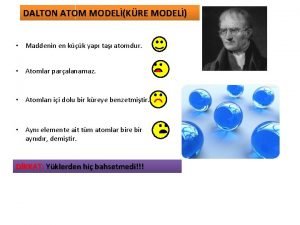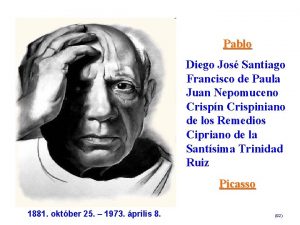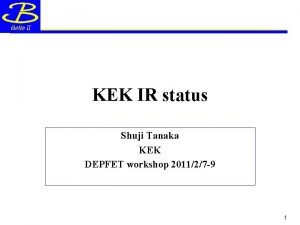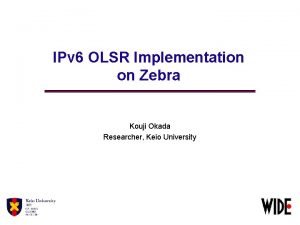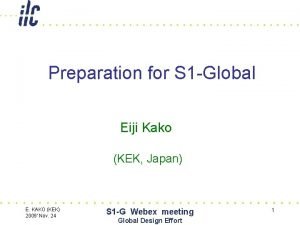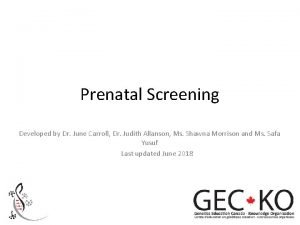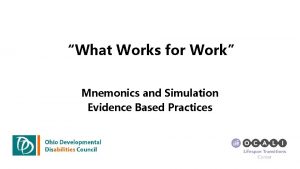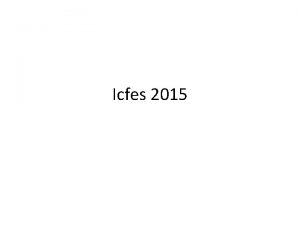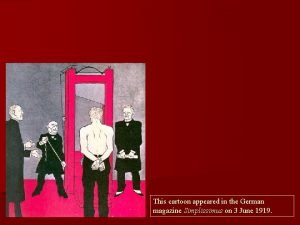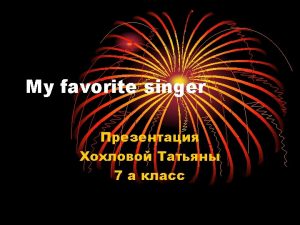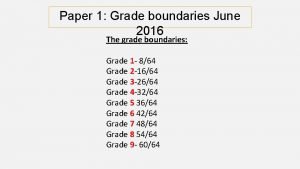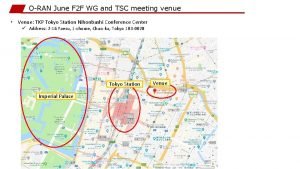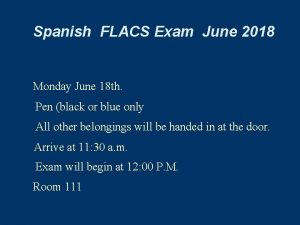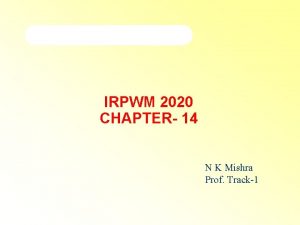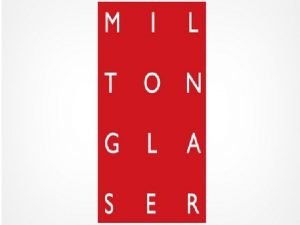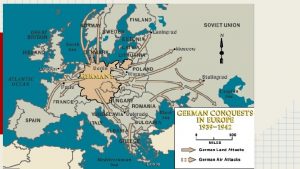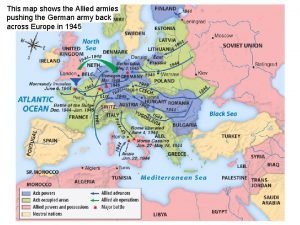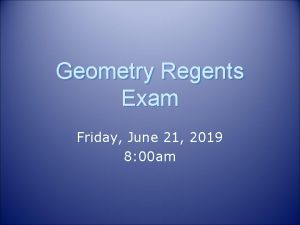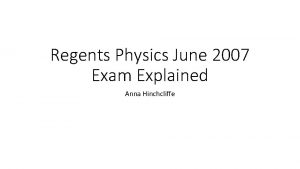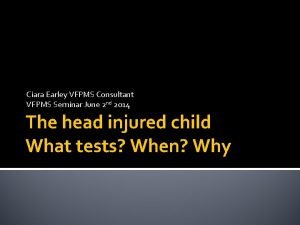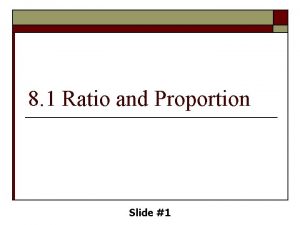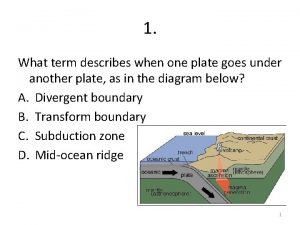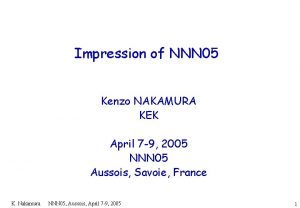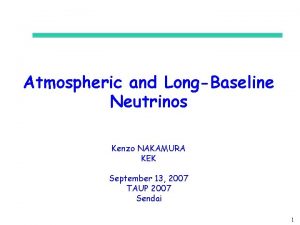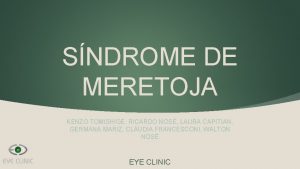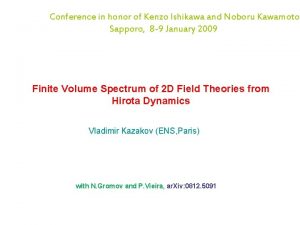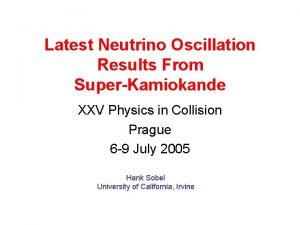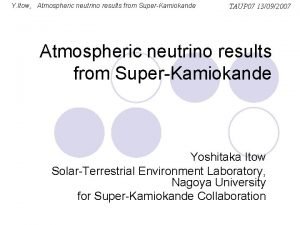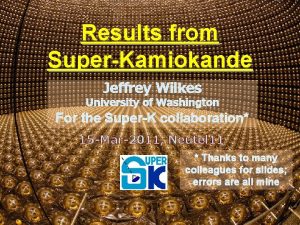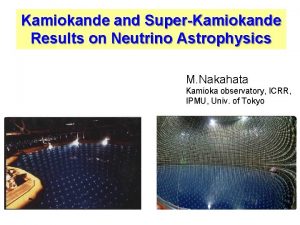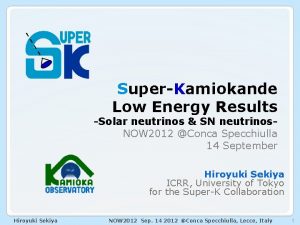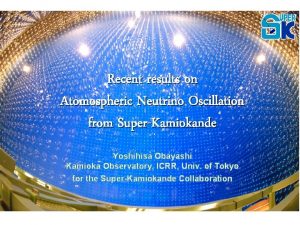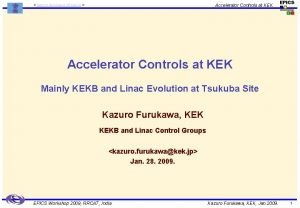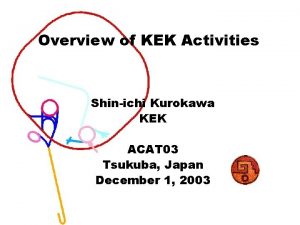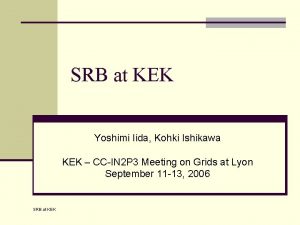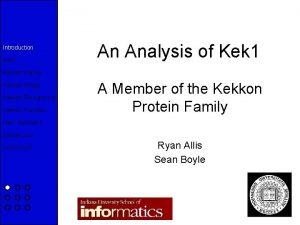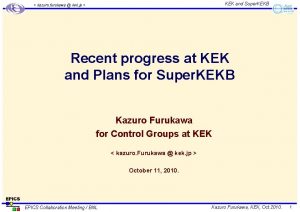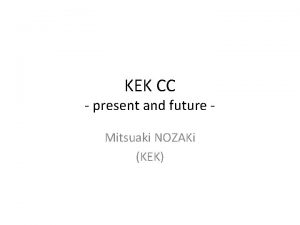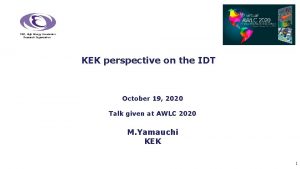SuperKamiokande Results an Prospects Kenzo NAKAMURA KEK June
















































![Dm 2[e. V 2] Contours and Best Fit Spectrum n NSKobs=108 n NSKexp (best Dm 2[e. V 2] Contours and Best Fit Spectrum n NSKobs=108 n NSKexp (best](https://slidetodoc.com/presentation_image_h2/9129d7ff704cd5641970e136b095b6c5/image-49.jpg)
![n En shape NSK (#n ) Dm 2[e. V 2] n disappearance versus En n En shape NSK (#n ) Dm 2[e. V 2] n disappearance versus En](https://slidetodoc.com/presentation_image_h2/9129d7ff704cd5641970e136b095b6c5/image-50.jpg)
























- Slides: 74

Super-Kamiokande Results and Prospects Kenzo NAKAMURA KEK June 24, 2004

1. Introduction 2. Solar Neutrino Results 3. Atmospheric Neutrino Results 4. K 2 K Results 5. Proton Decay Results 6. Future Prospects 7. Summary

1. Introduction

Super-Kamiokande Giant water Cherenkov detector C Scientific American Total mass: 50, 000 tons Fiducial mass: 22, 500 tons Location: 1, 000 m underground Inner detector: 11, 146 PMTs (50 -cmf ) (5, 182: SK-II) Outer detector: 1, 885 PMTs (20 -cmf ) 42 m n Construction started in December 1991 Observation started on April 1, 1996 (as scheduled) Atmospheric neutrino oscillation discovered in 1998 Solar neutrino oscillation discovered in 2001 (together with SNO CC meas. ) Accident on November 12, 2001 Partially rebuilt in October 2002 (SK-II) Full rebuilding to start in summer, 2005 1996 1997 1998 1999 SK-I 2000 2001 2002 accident 39 m 2003 2004 SK-II 2005 2006 2007 SK-III full reconstruction

K 2 K (KEK-to-Kamioka) • Accelerator: 12 Ge. V proton synchrotron • Beam intensity: 6 1012 protons / pulse • Repetition: 1 pulse / 2. 2 sec • Pulse width: 1. 1 s (9 bunches) • Horn-focused wide-band beam • Average neutrino energy: 1. 3 Ge. V • Near detector: 300 m from the target • Far detector (Super-Kamiokande): 250 km from the target • Goal: 1020 protons on target • Started:April, 1999

3 Flavor Neutrino Oscillation Neutrino Mixing Weak eigenstates Normal mass hierarchy assumed: n 3 ne n Mass eigenstates CP violating phase small nt n 2 n 1 Solar, Atmospheric Kam. LAND Long baseline (future) Super-beam LBL Neutrino factory Reactor

2. Solar Neutrino Results

Solar Neutrino Observation in Super-K n n n 8 B neutrino measurement by n + e- → n + e. Sensitive to ne, n , nt s(n (t)+e-) =~0. 15×s(ne+e-) High statistics ~15 ev. /day with Ee > 5 Me. V Real time measurement. Studies of time variations. Studies of energy spectrum. Precise energy calibration by LINAC and 16 N.

Super-Kamiokande-I solar neutrino data May 31, 1996 – July 13, 2001 (1496 days ) n + e- 22400 230 solar n events (14. 5 events/day) 8 B flux : 2. 35 0. 02 0. 08 Data SSM(BP 2004) [x 106 /cm 2/sec] +0. 014 0. 004 = 0. 406 -0. 013 ( Data/SSM(BP 2000) = 0. 465 0. 005 +0. 016/-0. 015 )

SK-I Day/Night Difference ADN= (Day-Night) (Day+Night)/2

Day/Night Asymmetry (Assuming BP 2000 flux and error) Dm 2=6. 3 x 10 -5 e. V 2 tan 2 q=0. 55 +1. 3 ADN=-1. 8 1. 6 -1. 2 %

Energy spectrum of SK-I Dm 2=7. 2 x 10 -5 e. V 2, tan 2 q=0. 38 Best fit solar+Kam. LAND (before n 2004) Best fit 8 B flux: 5. 21 x 106 /cm 2/sec Dm 2=6. 3 x 10 -5 e. V 2, tan 2 q=0. 55 SK only with BP 2000 flux and error constraint Best fit 8 B flux: 4. 84 x 106 /cm 2/sec Energy correlated systematic error Neutrino 2004

Flux independent excluded region

Allowed region assuming fixed 8 B flux BP 2000 total 8 B Flux: 5. 05 x 106/cm 2 s

BP 2000 total 8 B Flux: 5. 05 x 106/cm 2 s BP 2004 total 8 B Flux: 5. 79 x 106/cm 2 s

BP 2004 total 8 B Flux: 5. 79 x 106/cm 2 s Michael Smy, UC Irvine BP 2000 total 8 B Flux: 5. 05 x 106/cm 2 s

SK-II preliminary results Dec. 24, 2002 – March 25, 2004 Direction to the sun 325 days 8 – 20 Me. V Solar n signal = 2161 Flux= 2. 38 ± 0. 09 (stat. ) +82 (stat. ) -80 (x 106/cm 2/s) events (Systematic error under study) (cf. SK-I result: 2. 35 0. 02(stat. ) 0. 08(sys. ))

Time variation

Future prospects towards SK-III Possibility of detecting spectrum distortion ne survival probability Recoil electron spectrum ~10% upturn should be seen Lower threshold P(ne → ne) reduce stat. error reduce sys. error tan 2(q) 0. 55 0. 38 0. 28 Dm 2 (e. V 2) 6. 3 x 10 -5 4. 8 x 10 -5 7. 2 x 10 -5 10. 0 x 10 -5 7. 2 x 10 -5 En (Me. V)

SK Solar Neutrino Observation Summary High statistics solar neutrino data has been obtained. 8 B flux : 2. 35 0. 02 0. 08 [x 106 /cm 2/sec] Day/night asymmetry: ADN= -1. 8± 1. 6 +1. 3/-1. 2 %. Energy spectrum: SK prefers smaller Dm 2 and larger tan 2 q compared with global best fit parameters. Assuming 8 B total flux of the SSM predictions, LMA solution is preferred. Preliminary results from SK-II are consistent with SK-I. Hope to see definite energy spectrum distortion in SK-III, if the MSW prediction is correct.

3. Atmospheric Neutrino Results

Similarity and Differences of Atmospheric n and Accelerator n Experiments Atmospheric neutrinos n. Wide range of L and E Accelerator neutrinos n. Fixed L, fixed direction, well-defined timing Mostly p n. Almost pure n beam n. Production spectrum measured p+ _ + n ne e+ n Atmosphere Cosmic accelerator

Atmospheric Neutrinos Partially contained events Upward throughgoing muons Contained events Upward stopping muons Interaction in the rock Sub-Ge. V contained events Evis < 1. 33 Ge. V, Pe > 100 Me. V, P > 200 Me. V/c Multi-Ge. V contained events Evis > 1. 33 Ge. V Initial atmospheric neutrino energy spectrum contained stopping muons through-going muons

Atmospheric Neutrino Oscillation L = 25 km L = 500 km L = 10000 km

SK-I Zenith Angle Distributions Assume n nt 2 -flavor oscillation Best fit (Dm 2=2. 1 x 10 -3 e. V 2, sin 22 q=1. 02 χ2 min=174. 9/177 d. o. f) No oscillation χ2 =465/179 d. o. f

Best Fit and Contours for SK-I

Chi-Squared Shape

L/E Analysis: Motivation Zenith angle distributions -like sub-Ge. V < 400 Me. V Oscillation Decay -like sub-Ge. V > 400 Me. V -like multi-Ge. V + PC -like sub-Ge. V multi-ring -like multi-Ge. V multi-ring Decoherence Other models can explain zenith angle dependent muon deficit. How can we distinguish oscillation from other hypotheses ?

L/E Analysis: Method Neutrino oscillation : P Neutrino decay : P Neutrino decoherence : P Dm 2 L =1– ) E = (cos 2 q + sin 2 q x exp(– m L ))2 2 t E 1 = 1 – sin 22 q x (1 – exp(–g 0 L )) 2 E sin 22 qsin 2(1. 27 Use events with high resolution in L/E The first dip can be observed Direct evidence for oscillations Strong constraint to oscillation parameters, especially Dm 2 value

Reconstruction of E and L Neutrino energy Neutrino direction FC single-ring En Eobserved Preliminary Eobserved En Neutrino energy is reconstructed from observed energy using relations based on MC simulation Zenith angle Flight length Neutrino flight length is estimated from zenith angle of particle direction

L/E resolution cut Preliminary FC single-ring Full oscillation 1/2 oscillation Select events with high resolution in L/E Bad L/E resolution for horizontally going events due to large d. L/dcosq D(L/E)=70% low energy events due to large scattering angle

Tests for neutrino decay & decoherence Oscillation Decay Decoherence c 2 min=37. 8/40 d. o. f c 2 min=49. 2/40 d. o. f Dc 2 =11. 4 c 2 min=52. 4/40 d. o. f Dc 2 =14. 6 Preliminary 3. 4 s to n decay 3. 8 s to n decoherence First dip observed in data cannot be explained by alternative hypotheses

L/E Analysis Oscillation Fit

Exotic scenarios

SK-II Preliminary Results

Atmospheric Neutrino Summary n Consistent picture of n →nt oscillation has been obtained. n Oscillation pattern in L/E analysis has been demonstrated. n SK-II data are consistent with the SK-I results.

4. K 2 K Results

250 km K 2 K Collaboration JAPAN: High Energy Accelerator Research Organization (KEK) / Institute for Cosmic Ray Research (ICRR), Univ. of Tokyo / Kobe University / Kyoto University / Niigata University / Okayama University / Tokyo University of Science / Tohoku University KOREA: Chonnam National University / Dongshin University / Korea University / Seoul National University U. S. A. : Boston University / University of California, Irvine / University of Hawaii, Manoa / Massachusetts Institute of Technology / State University of New York at Stony Brook / University of Washington at Seattle POLAND: Warsaw University / Soltan Institute Since 2002 JAPAN: Hiroshima University / Osaka University CANADA: TRIUMF / University of British Columbia Italy: Rome France: Saclay Spain: Barcelona / Valencia Switzerland: Geneva RUSSIA: INR-Moscow Since 2004 U. S. A. : Duke University

Goals for K 2 K Confirm Super-Kamiokande’s results on atmospheric ü Counting observed/expected numbers of events ü Comparison of the near and far spectra è Observation of oscillation pattern as a function of energy Measurements of neutrino cross sections in the Ge. V ü Particularly interesting is the NC p 0 production

History of K 2 K n 1995 Proposed to study neutrino oscillation for n n atmospheric neutrinos anomaly. 1999 Started taking data. 2000 Detected the less number of neutrinos than the expectation at a distance of 250 km. Disfavored nulloscillation at the 2 s level. 2002 Observed indications of neutrino oscillation. The probability of null oscillation is less than 1%. 2004 Confirmed neutrino oscillation with both a deficit of n and the distortion of the En spectrum.

K 2 K experiment ~1011 n /2. 2 sec (/10 m 10 m) 12 Ge. V protons p+ ~106 n /2. 2 sec n (/40 m 40 m) SK nt + Target+Horn p monitor 200 m decay pipe monitor 100 m ~250 km Near n detectors (ND) (monitor the beam center) Signal of n oscillation at K 2 K Reduction of n events l Distortion of n energy spectrum l ~1 event/2 days

protons/pulse Accumulated POT (× 1018) (× 1012) Jan 01 K 2 K-I Jan 00 Jan 02 Jan K 2 K-II Jan 03 8. 9× 1019 POT for Analysis Jan 99 Accumulated POT (Protons On Target)

SK Events GPS Tspill TOF=0. 83 msec SK TSK Decay electron cut. 500 sec 20 Me. V Deposited Energy No Activity in Outer Detector Event Vertex in Fiducial Volume More than 30 Me. V Deposited Energy 108 events 5 sec Analysis Time Window -0. 2<TSK-Tspill-TOF<1. 3 sec (BG: 1. 6 events within 500 s 2. 4× 10 -3 events in 1. 5 s) TDIFF. ( s)

K 2 K-SK events preliminary K 2 K-alll (K 2 K-I, K 2 K-II) FC 22. 5 kt 1 ring -like e-like Multi Ring for Enrec DATA (K 2 K-I, K 2 K-II) 108 (56, 52) 66 (32, 34) 57 (56) (30, 27) 9 (2, 7) 42 (24, 18) MC (K 2 K-I, K 2 K-II) 150. 9 (79. 1*, 71. 8) 93. 7 (48. 6, 45. 1 ) 84. 8 (44. 3, 40. 5) 8. 8 (4. 3, 4. 5) 57. 2 (30. 5, 26. 7) Ref; K 2 K-I(47. 9× 1018 POT), K 2 K-II(41. 2× 1018 POT) *: The number is changed from the previous one.

Analysis Overview KEK Observation #n, p and q Measurement F(En), n interaction MC Far/Near Ratio (beam MC with p mon. ) SK Observation #n and En rec. (sin 22 q, Dm 2) Expectation #n and En rec.

Near detector measurements n n n 1 KT Water Cherenkov Detector (1 KT) Scintillating-fiber/Water sandwich Detector (Sci. Fi) Lead Glass calorimeter (LG) before 2002 Scintillator Bar Detector (Sci. Bar) after 2003 Muon Range Detector (MRD) Muon range detector

Results NSK exp=150. 9+11. 6 -10. 0 #SK Events Toy MC NSKobs=108 Spectrum Expected shape (No Oscillation) CC-QE assumption Enrec[Ge. V] 108 150. 9

K 2 K Oscillation Analysis Results preliminary Dm 2 n Best fit values. sin 22 q = 1. 53 Dm 2 [e. V 2] = 2. 12 10 -3 n Best fit values in the physical region. sin 22 q = 1. 00 A toy MC Dm 2 [e. V 2] = 2. 73 10 -3 Dlog. L=0. 64 14. 4% 2. 73 sin 22 q=1. 53 can be occurred by statistical fluctuation with 14. 4%. 1. 00 1. 53 sin 22 q
![Dm 2e V 2 Contours and Best Fit Spectrum n NSKobs108 n NSKexp best Dm 2[e. V 2] Contours and Best Fit Spectrum n NSKobs=108 n NSKexp (best](https://slidetodoc.com/presentation_image_h2/9129d7ff704cd5641970e136b095b6c5/image-49.jpg)
Dm 2[e. V 2] Contours and Best Fit Spectrum n NSKobs=108 n NSKexp (best fit)=104. 8 preliminary Best Fit KS prob. =52% Based on Dln. L sin 22 q Enrec[Ge. V]
![n En shape NSK n Dm 2e V 2 n disappearance versus En n En shape NSK (#n ) Dm 2[e. V 2] n disappearance versus En](https://slidetodoc.com/presentation_image_h2/9129d7ff704cd5641970e136b095b6c5/image-50.jpg)
n En shape NSK (#n ) Dm 2[e. V 2] n disappearance versus En shape distortion sin 22 q Both disappearance of nm and the distortion of En spectrum have the consistent result. sin 22 q

Null oscillation probability preliminary The null oscillation probabilities are calculated based on Dln. L. K 2 K-I n disappearance K 2 K-II K 2 K-all 2. 0% 3. 7% 0. 33%(2. 9 s) En spectrum distortion 19. 5% 5. 4% 1. 1% (2. 5 s) Combined 1. 3%* 0. 56% 0. 011% (2. 5 s) (2. 8 s) (3. 9 s) *: The value is changed from the previous one. K 2 K confirmed atmospheric neutrino oscillation discovered by Super-K.

Other K 2 K Results n +H 2 O NC 1 p 0 n ne search Dm 2[e. V 2] 90%CL limit not NC 1 p 0 M (Me. V) =0. 065 0. 001 0. 007 =0. 064 (prediction) preliminary 90%CL sensitivity sin 22 q e PRL, to be published

5. Proton Decay Results

p → e+p 0: Present Status P-decay MC ε=43% ν MC 0. 2 BG/1489 d Data 0 candidate τ/B > 5. 7× 1033 yr (Super-K, 90%C. L)

p → n. K+: Present Status (1) P → νK+, K+→ +ν 236 Me. V/c No significant excess near 236 Me. V/c. (ε=33%)

p → n. K+: Present Status (2) 16 O→νK+15 N , K+→ + ν e+νν 6 – 10 Me. V 236 Me. V/c Nhit distribution for the prompt gamma search Signal region Background = 0. 3 ε= 8. 7% Candidate = 0

p → n. K+: Present Status (3) Back to back 205 Me. V/c each Atmospheric ν MC (3) P → νK+, K+→ π+π0 P-decay MC Data P. e. of π+ ring Just outside of the box…. πo momentum ε= 6. 5 % (1), (2) and (3) BG=0. 9 ev/92 ktonyr Data=0 ev. τ/B > 2. 0× 1033 yr (90%CL, Super-K)

6. Future Prospects

JPARC KEK To Kamioka J-PARC Nu. MI K 2 K (FNAL) E(Ge. V) Int. (1012 ppp) Rate(Hz) Power(MW) 50 12 330 40 6 0. 275 0. 53 0. 45 0. 75 0. 41 0. 0052

Overview of the T 2 K Experiment n beam of ~1 Ge. V Super-K: 50 kton Water Cherenkov Kamioka J-PARC 0. 75 MW 50 Ge. V PS ~Mt “Hyper Kamiokande” 1 st Phase ln → nx disappearance ln → ne appearance l. NC measurement 4 MW 50 Ge. V PS 2 nd Phase l. CPV lproton decay

Super-K Full Reconstruction Schedule 2003 2004 2005 Today 2006 10 4 6 SK-II n Reconstruction for T 2 K Phase-I: After the K 2 K experiments complete data-taking. Nov, 2005 to March, 2006 n Water filling: April and May in 2006 n Start taking data from June 2006 reconstruction water filling SK-III

JHF sensitivity CHOOZ limit Δm 2 T 2 K Phase I: Measurement of sin 2 2θ 13 Expected signal for sin 22 q 13=0. 1 × 1/20 OA 2 deg 5 yrs sin 22θ 13 sin 2 2θ 13 νμ(CC+NC) Beam νe Osc’d νe Signal+BG 0. 1 11. 1 123. 2 145. 5 0. 01 11. 1 12. 3 34. 5

Twin Detector Hyper-Kamiokande 2 detectors× 48 m × 50 m × 250 m, Total mass = 1 Mton

3 Generations of Kamioka Nucleon Decay Experiments Kamiokande Mass Super-Kamiokande 3, 000 t (+1, 500 t) Hyper-Kamiokande 50, 000 t Photosensitive Coverage 20 % Observation Started 1983 1996 ? 5 100 500? ** Cost (Oku-Yen)* *1 ** 40 % (SK-I, III) ~ 20 % (SK-II) 1, 000 t Oku-Yen 1 M$ Target cost; No realistic estimate yet ?

Oscillation Probability Oscillation Probabilities CP violation effect At low energies, the event rate decreases but the CP asymmetry increases.

T 2 K: CP Violation Sensitivity 4 MW, 540 kt 2 yr for n 6~7 yr for n CHOOZ excluded sin 22 q 13<0. 12@Dm 312~3 x 10 -3 e. V 2 Dm 212=6. 9 x 10 -5 e. V 2 Dm 322=2. 8 x 10 -3 e. V 2 q 12=0. 594 q 23=p/4 stat+5%syst. stat+2%syst. (signal+BG) stat only stat+10%syst. no BG signal stat only T 2 K 3 s discovery T 2 K-I 90% 3 s CP sensitivity : |d|>20 o for sin 22 q 13>0. 01 with 2% syst.

p → e+p 0 in Hyper-K 20 Mton・yr atmνBG MC “SK cut” ~ 2. 3 events/Mton・yr ε= 43 % “tight cut” ~ 0. 15 events/Mton・yr ε= 17 %

p → e+p 0 in Hyper-K: Sensitivity SK cut HK × 20 yr Tight cut HK × 20 yr τ/B > 2 × 1035 yr (Hyper-K 20 yrs, 90%CL) (× 40 of the present limit)

p → n. K+ in Hyper-K: Sensitivity Slightly old cut HK × 20 yr τ/B > 3 × 1034 yr (Hyper-K 20 yrs, 90%CL) (× 15 of the present limit)

Supernova Neutrino Observation with a 1 Mton (Fiducial Volume) Water Cherenkov νep→e+n ~100, 000 nep→e+n events ~8, 000 νe→νe events Andromeda (M 31) LMC Galactic Center number of events/burst Supernova (for Galactic Center SN) ~20 events at Andromeda νe→νe distance (kpc) Precise observation of explosion process and neutrino mass test <~1 e. V

Wished Construction Plan 2008 20 1 1 20 2 09 10 11 2 3 14 15 16 7 18 19 20 21 22 3 T 2 K-I HK construction HK experiment

Hypaer-Kamiokande Summary n In the future long baseline neutrino oscillation experiments, measurements of q 13 and CPV are the most important targets. If q 13 turns out to be not too small, CPV measurements may be within the reach of super/beta beam experiments. For relatively short distance and low energy beam, a 1 -Mton class giant water Cherenkov detector gives an opportunity to conduct a clean experiment. n A giant water Cherenkov detector also gives an opportunity to search for nucleon decay. Moreover, once a type-2 supernova explosion occurs in our galaxy, explosion mechanisms as well as neutrino properties can be studied in detail n Time scale of Hyper-Kamiokande project is rather remote, and its funding most probably depends on the outcome of T 2 K Phase-I. However, currently it is the only project with a clear road map envisioned.

7. Summary

Summary Super-Kamiokande’s high-statistics solar neutrino observation favors the MSW LMA solution. Super-Kamiokande discovered atmospheric neutrino oscillation. The recent L/E analysis has demonstrated the first observation of the oscillation pattern. K 2 K confirmed the atmospheric neutrino oscillation with the artificial neutrino beam. Oscillation pattern has been observed. No proton decay signal observed so far. Future 1 -Mton water Charenkov detecor, Hyper. Kamiokande, provides unique opportunities for neutrino physics and proton decay search.
 Kék alapon sárga kereszt zászló
Kék alapon sárga kereszt zászló Cxc 2018 results
Cxc 2018 results Prospects of agriculture in bangladesh
Prospects of agriculture in bangladesh World population prospects
World population prospects In paragraph 1 impatient of is best interpreted as meaning
In paragraph 1 impatient of is best interpreted as meaning Prospects preposition
Prospects preposition Quantum computing: progress and prospects
Quantum computing: progress and prospects Nakamura
Nakamura Kunio nakamura
Kunio nakamura Gary nakamura
Gary nakamura Nakamura kunio
Nakamura kunio Takashi nakamura
Takashi nakamura Shin nakamura chemical
Shin nakamura chemical Nakamura
Nakamura Nakamura
Nakamura Tindak balas kimia disertai dengan perubahan bentuk
Tindak balas kimia disertai dengan perubahan bentuk Kek
Kek Kako kek
Kako kek Premo kek
Premo kek Kek manet
Kek manet Kek gem
Kek gem Kek kh
Kek kh Kek
Kek Futaba kek
Futaba kek Bob kek
Bob kek Kek tools
Kek tools Kek
Kek Kek n
Kek n Kako kek
Kako kek Kek based
Kek based Kek 13
Kek 13 üzümlü kek modeli
üzümlü kek modeli Picasso kék korszak
Picasso kék korszak Kek kds
Kek kds Kek manet
Kek manet Kako kek
Kako kek Dr june carroll
Dr june carroll 30 days has september
30 days has september 1215 king
1215 king Elephant riding in phuket texto completo respuestas
Elephant riding in phuket texto completo respuestas January 2009 chemistry regents answers
January 2009 chemistry regents answers A german cartoon published in 1919
A german cartoon published in 1919 Britney spears biography
Britney spears biography Dr june james
Dr june james When your child leaves home poem
When your child leaves home poem January february march april june july
January february march april june july June 22 to july 22
June 22 to july 22 Summary period: june 2021 poem
Summary period: june 2021 poem June canavan foundation
June canavan foundation Companies in june
Companies in june Welcome june blessings
Welcome june blessings Good morning welcome june
Good morning welcome june Tsc timetable
Tsc timetable Flacs exam
Flacs exam June too soon july stand by
June too soon july stand by New irpwm june 2020
New irpwm june 2020 June's journey
June's journey Lenore hetrick photo
Lenore hetrick photo Milton glaser biography
Milton glaser biography Network weaver
Network weaver Good morning 1 june
Good morning 1 june Nysedregents
Nysedregents June 6 1944
June 6 1944 June preschool newsletter
June preschool newsletter Battle of midway june 1942
Battle of midway june 1942 Liz owns stock in nar
Liz owns stock in nar June 21 2019 geometry regents answers
June 21 2019 geometry regents answers 1 june children's day
1 june children's day June safety tips
June safety tips June 2007 physics regents
June 2007 physics regents Vfpms
Vfpms Good morning please
Good morning please June 20 2008
June 20 2008 June cheetah wegener
June cheetah wegener Ward 34 ninewells
Ward 34 ninewells
